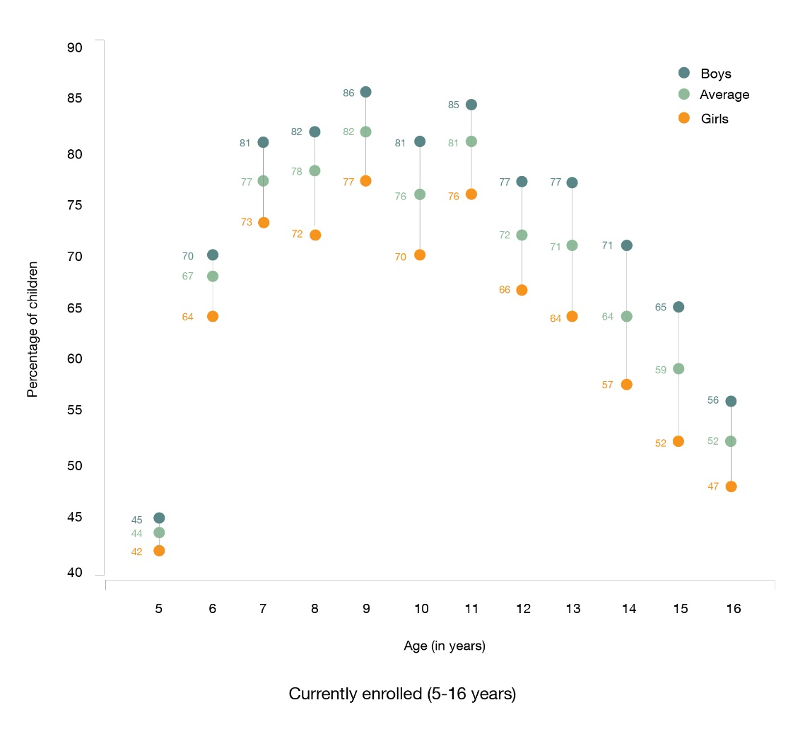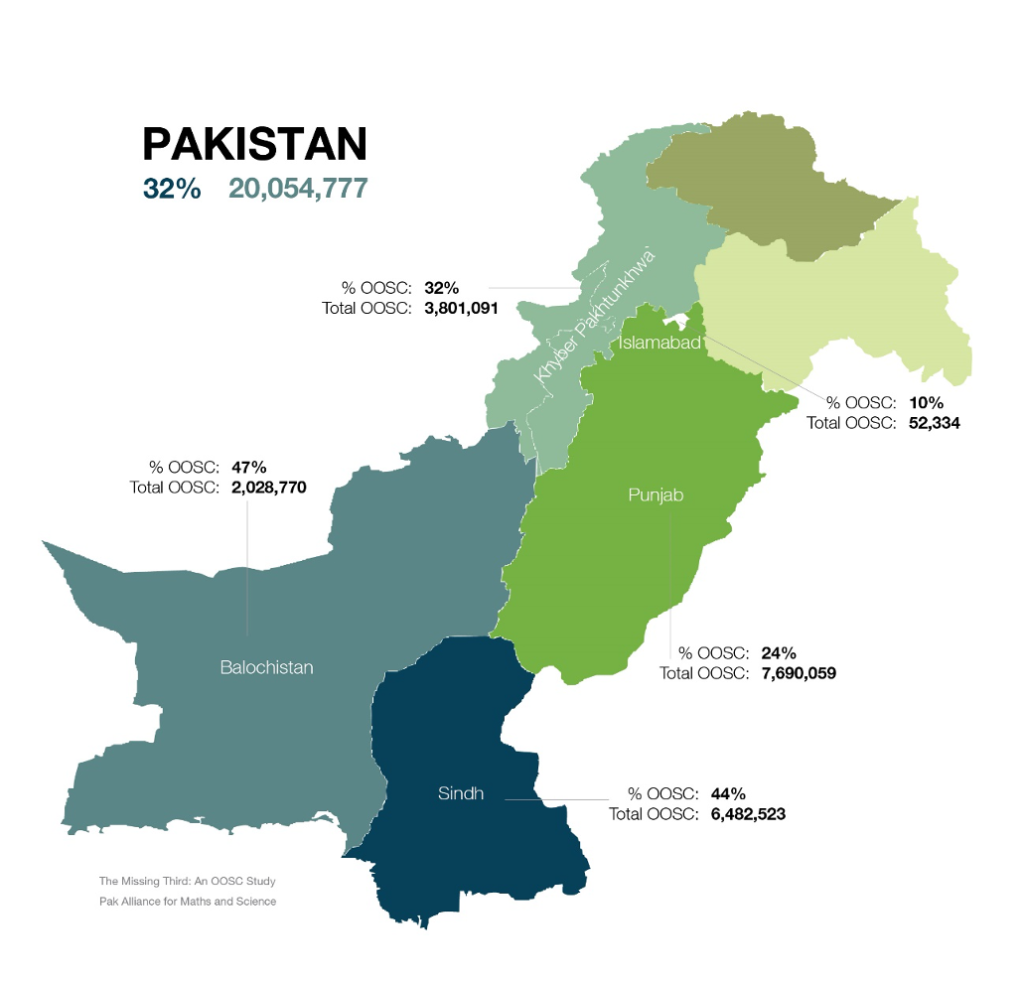An (updated) out of school children study of Pakistani 5-16 year olds
In 2021, PAMS released The Missing Third based on the analysis of data from the Population Census 2017 and the Pakistan Social and Living Standards Measurement 2019-20. Unfortunately, not much has changed since then in terms of the proportion of Pakistani children the state and society continue to fail.
From a population of 63 million 5-16 year olds (2017), Pakistan is now home to over 71 million in the same age cohort.
The updated study dives into the intra-district and intra-provincial inequalities in terms of access to girls and boys and provides for actionable numbers for education managers to work with.
The hope is that policy makers in the respective Secretariats will allow for districts and sub-districts’ managers to devise strategies, to have access to the requisite resources, and to be held accountable to address the challenge in line with the local needs. And that we will see less of bulky sector plans targeting OOSC with a one-size-fits-all approach.
The Missing Third (2021)
An out of school children study of Pakistani 5-16 year olds
With an increasing population and a burgeoning youth cohort, Pakistan now has more than 63 million children between 5 and 16 years.
Of these, the public schooling system only caters to 27 million (42%), over 20 million (32%) currently out of school, and over 16 million (26%) enrolled in schools run by the private sector or non-profits, madaris, and non-formal educational institutions.
On the equity front, the Pakistani state needs to ensure that right to education for girls in rural areas and children with disabilities across the country is provided for. The literacy rate among persons with disabilities (15 years or older) is 31.5%, or almost half of the national average. Among females with disabilities, the literacy rate falls to an abysmal 17% or almost a third of the national average for Pakistani females above the age of 15 years.


Challenges in major urban centres and those in rural areas are vastly different. So will the solutions. Only building high schools or upgrading existing primary and middle schools will solve only a part of the problem. Unless the state responds to the reasons why children are not in school in specific localities and regions, a one-size fits all educational service provision model will continue to see a third of Pakistani children never having the educational and economic opportunities that is their right.
In 21 districts of the country, the literacy rate of rural female is less than 10%. To ensure that the Pakistani state is able to provide female teachers and healthcare workers in these districts, only building schools will not suffice. A deeper understanding of the equity challenge for these girls, and all children between the ages of 5 and 16 years is needed.
